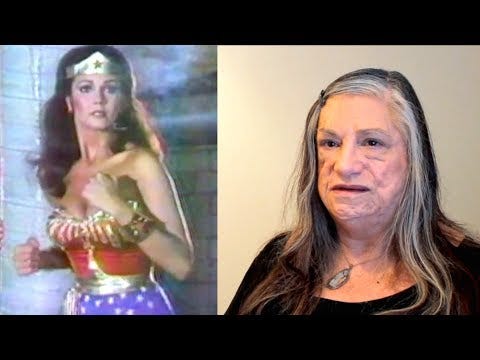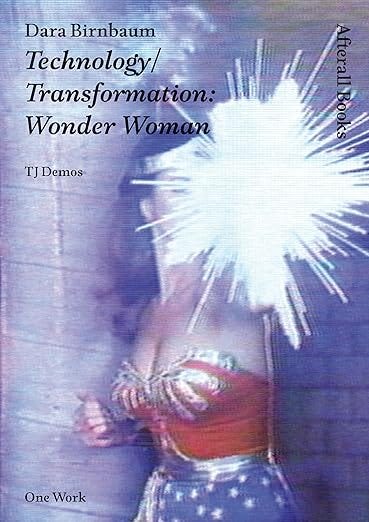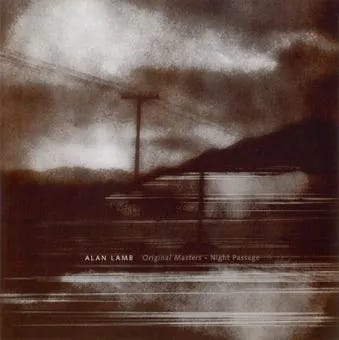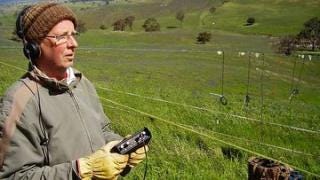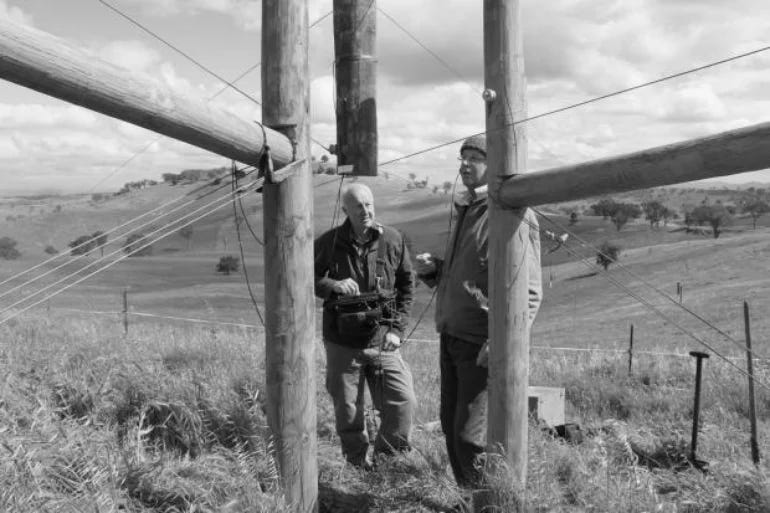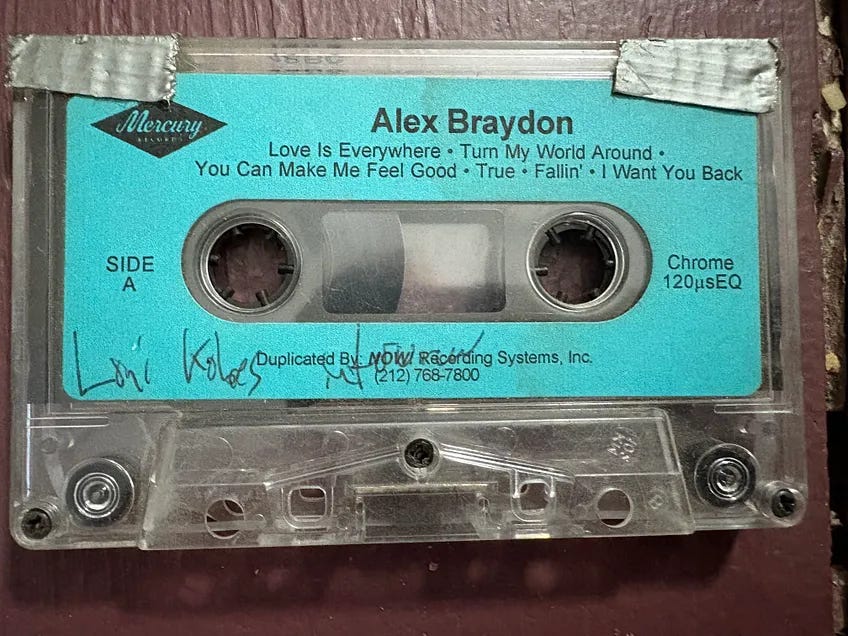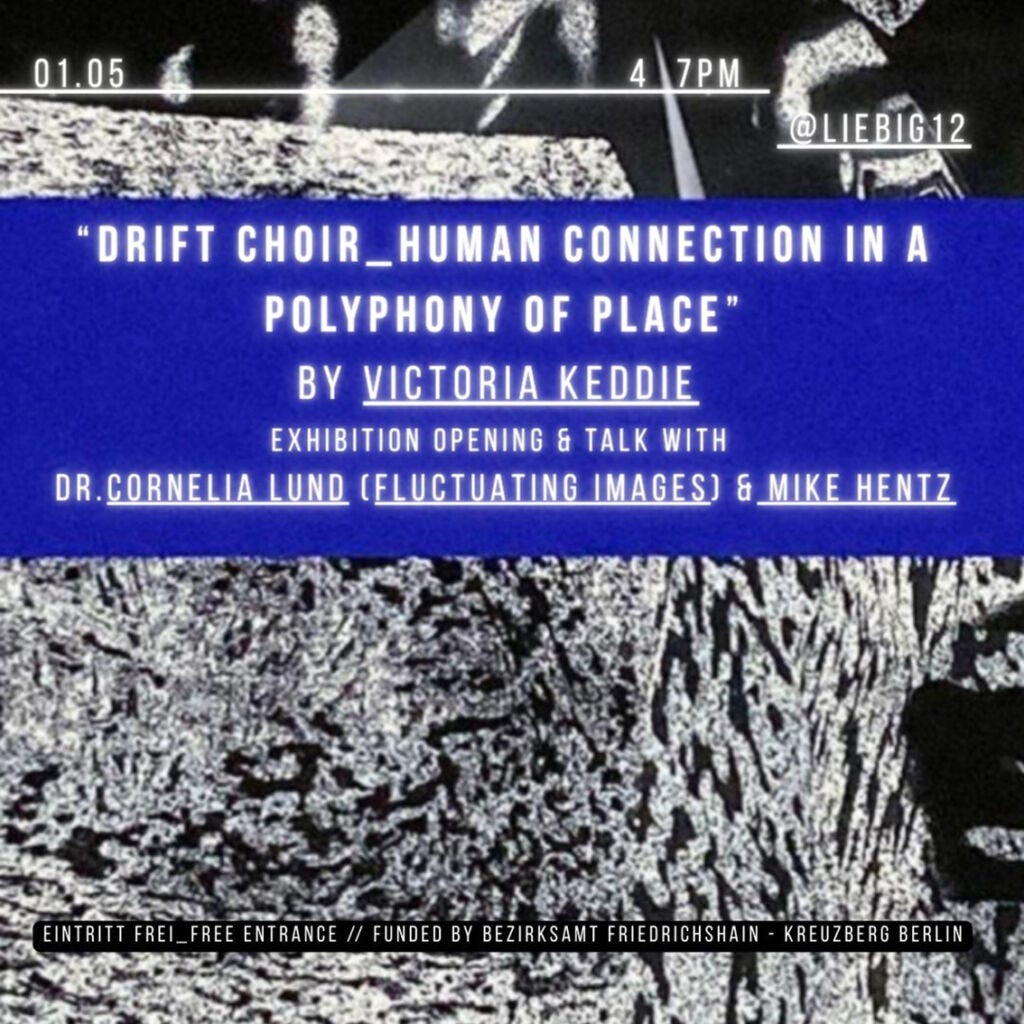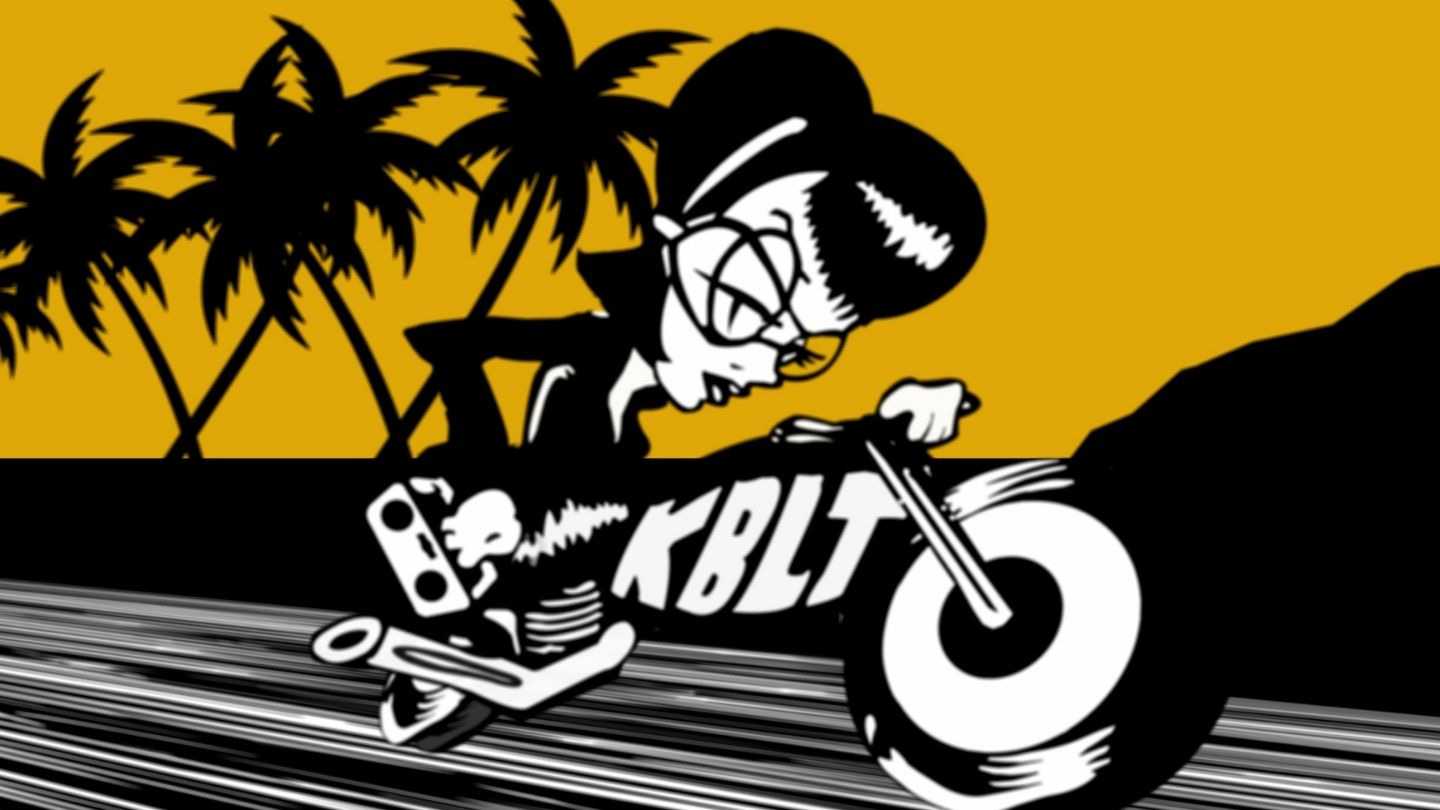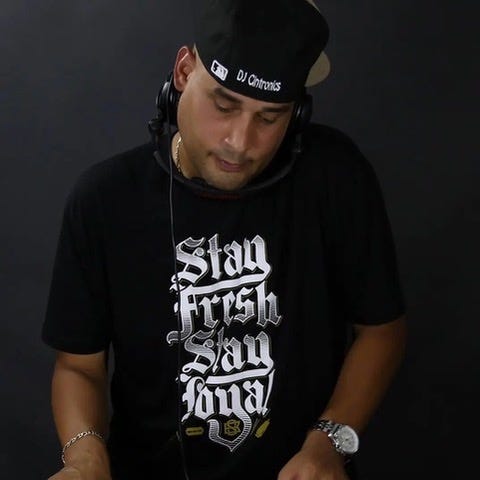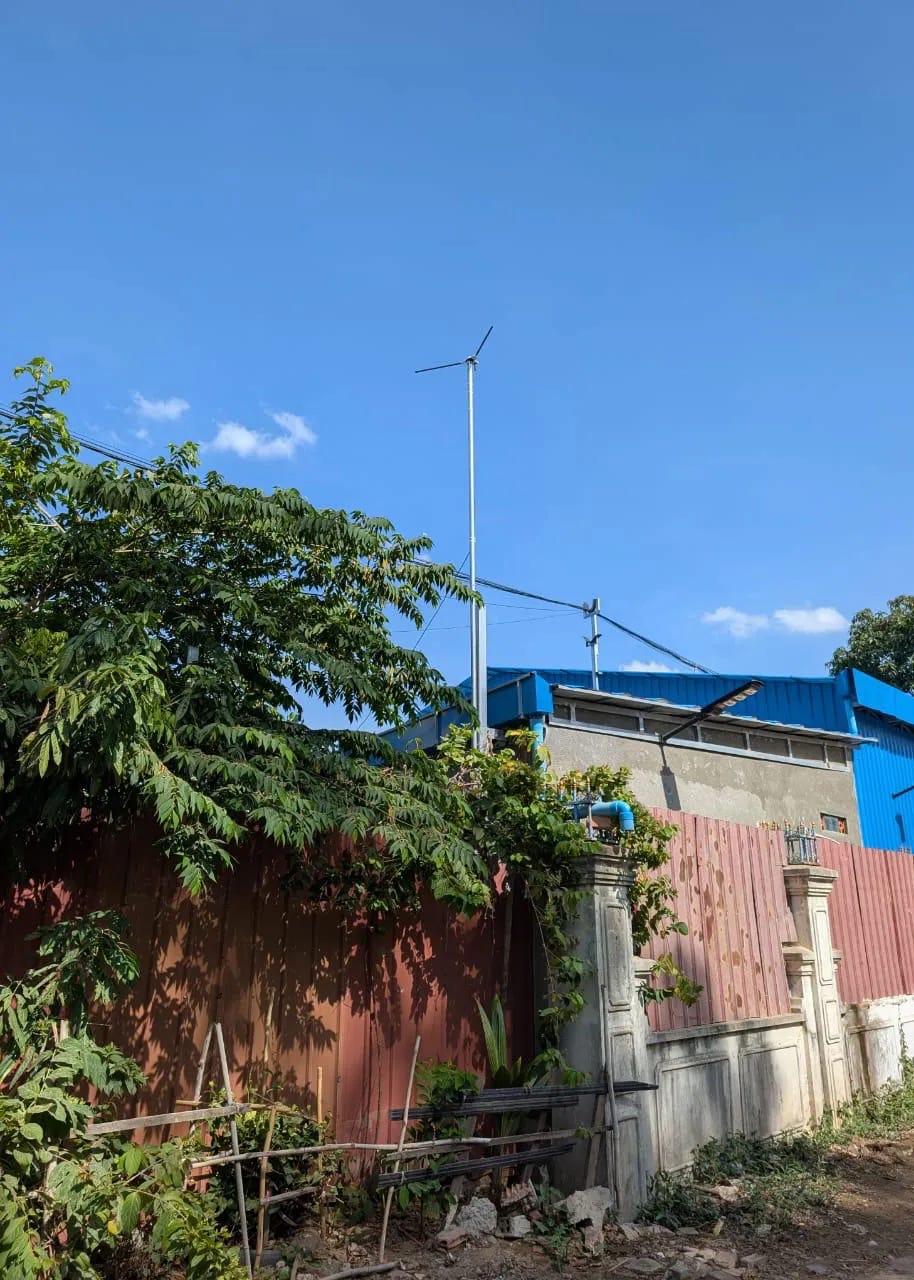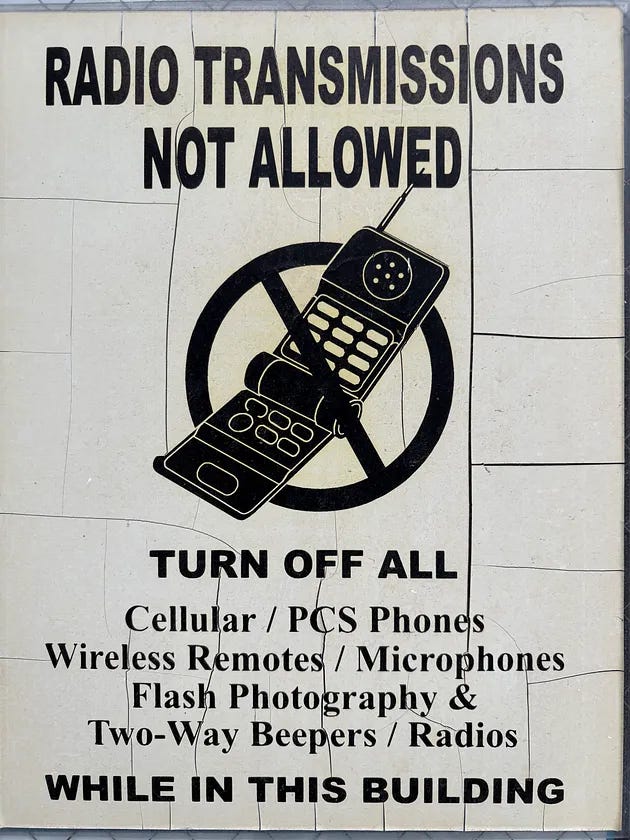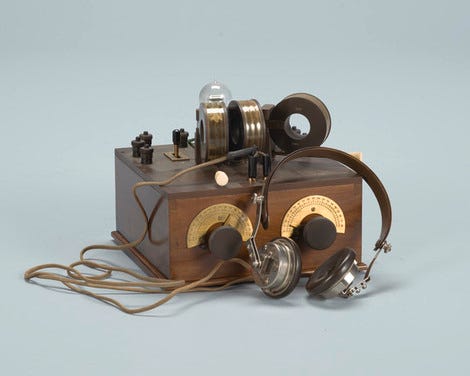This Week in Radio Art: May 23-31
Interviews with two pirate radio DJs, and tributes to two passed transmission artists.
This Week in Radio Art:
Interviews with two historic pirate radio stations: Lonnie Kobres from Lutz Community Radio and Dr. Bob from Radio Tonka.
Tributes to recently passed transmission art legends Alan Lamb and Dara Birnbaum.
Two pirate radio discussions, one in San Francisco with Stephen Dunifer, and another in New York with Dave Cintron.
Victoria Keddie’s “Drift Choir” in Athens, Berlin, Bogata, and New York.
Ka Baird’s “A Thousand Miles of Hungry Static” in New York.
Plus, a call to action from Open-Weather.
DARA BIRNBAUM
Dara Birnbaum, one of the transformative figures in transmission art, died May 2 at age 78. In 1975 Birnbaum met Dan Graham, a visual artist, writer, and curator who introduced her to a British film theory journal that she thought was lacking in its coverage of television, the then-dominant force of American mass culture, according to Wikipedia. Birnbaum’s most famous work, the 1978 – 1979 video art Technology/Transformation: Wonder Woman, with footage from television’s Wonder Woman subverting ideological subtexts and meanings embedded in television.
T. J. Demos explains in the book “Dara Birnbaum: Technology/Transformation: Wonder Woman,” that, “During its seven-minute span we see, again and again, the transformation of the drab secretary Diana Prince into the super-heroic Wonder Woman. By isolating and repeating the moment of transformation—spinning figure, arms outstretched—Birnbaum unmasks the technology at the heart of the metamorphosis. Demos explains that Birnbaum was exploring "television on television," which indicates a consciousness of analyzing the television/video medium within its own terms, an exploration of the structural elements of television content, and an attempt to talk back to television.
Lisa Yin Zhang wrote in Hyperallergic, “As a young artist in the 1970s, even as television was being consummately ignored in film and art circles, Birnbaum grasped its potential as a dominant force in American culture. Over a half-century career, she spliced, resequenced, and repeated excerpts from sources as diverse as game show quizzes, sports programming, soap operas, and YouTube videos to explore and manipulate how information is disseminated, transformed, and assimilated.”
Wikipedia explains, “She used video to reconstruct television imagery using as materials such archetypal formats as quizzes, soap operas, and sports programmes. The foundation of her work uses techniques which involve the repetition of images and interruption of flow with text and music. She was also well known for having formed part of the feminist art movement that emerged within video art in the mid-1970s.”
ALAN LAMB
Alan Lamb passed away last month. The Scottish-born Australian, to me, is best known for harnessing the sound of electricity. His track, “Last Anzac,” altered my perception of what radio art was. At first, I just thought it was radio plays, and fooling listeners with fake newscasts, and it is all that, and that is wonderful. But you can also use all sorts of transmissions in radio art. “Last Anzac” may have been my awakening on this issue. About a minute in, I heard the first crackle of electricity, and I was hooked. The most interesting part of the radio dial, to me, soon became the static between spaces. Those sounds were much friendlier, and more open to collaboration and improvisation that what you hear on “radio stations.”
Lamb’s 1998 “Night Passage” album — reissued last year on Room40 — is a canonical transmission art work, a beautiful recording of the sound in the wires and out in the ether. Lawrence English from Room40, agrees, writing last year for the reissue, “‘Night Passage’ is one of those recordings I feel has always been with me, it’s that foundational. It completely reshaped the way a generation of audio explorers thought about how sound and music might exist in the orbit of each other.”
Rainerlitz.net explains:
"Tension changes can, with practice, be used to create all kinds of musical effects at will (such as those which produce the climax of ‘Last Anzac’), or to produce the subtlest changes of timbre as, for example, in the long floating notes (E and F) in ‘Mirages.’ Rhythmic tension changes can also be used, and these give rise to a whole new order of rhythmic percussive effects as, for example, in the opening section of ‘Night Passage,’ when a climax sounds in B. An interesting tension effect can also be heard when the sun is obscured by fast- moving clouds, causing temperature-dependent changes in tension.
"A number of factors related to the physics make recording wire music a major technological challenge. Notably, the frequencies generated range from the subsonic (less than 20 Hz) to the supersonic (more than 20 KHz) and the dynamic range extends from the sound of a walking fly to amplitudes exceeding the diameter of the wire (approximately 120 to 130 dB range).”
Rainerlinz.net also writes:
“Perth-based composer and biomedical research scientist Alan Lamb has originated a body of innovative composition based on the resonance of `singing wires.' Born in 1944 in Edinburgh, Scotland, Lamb had little early formal musical education other than joining a secondary school choir and learning the piano privately from age 8 to 17. He spent his childhood in the countryside near the village of Dunning in Perthshire, under the care of a nanny he called `My' and to whom he owes his first awareness of `wire music.' On walks into Dunning with the five-year-old Lamb she would put her ear to the telephone poles to "hear the sound the world made". He remembers hearing a faint hum, but it was only years later, Lamb says, that he understood "the deep truth" of her claim.
Last FM’s biography of Lamb says he, “is an Australian artist, composer, and sound sculptor. He is best known for installations of large scale Aeolian harps, such as his album ‘Primal Image,’ which consists of contact microphone recordings of kilometer long spans of telegraph wire on twelve acres in rural Baldivis south of Perth purchased for that purpose.”
Central European Network for Sonic Ecologies wrote:
“Alan Lamb (1944 in Edinburgh - 2025 in Perth) was Perth-based composer and biomedical research scientist. Living in Fremantle, he has created a body of innovative composition based on the resonance of 'singing wires.'
His family emigrated in 1951 to Australia, settling in Peppermint Grove, a suburb of Perth. In 1968 he graduated in medicine from the University of Western Australia and, a year later, travelled through the Asian subcontinent from Singapore to Pakistan, then eventually back to Edinburgh in 1971. He obtained a PhD in physiology at the University of Edinburgh in 1975. After seeing an international exhibition of kinetic art at the Institute of Contemporary Art in London in 1971, Lamb became interested in sculpture and devised a piece based on the idea of light diffracted through flowing water. This gave rise to the notion that every movement of the artwork should be associated with an accompanying sound. He began to experiment with ways of producing sounds which held the equivalent dynamic complexity of form and structure as the images owned by the sculpture. In 1974 he constructed numerous devices designed to amplify the upper harmonics inherent in nylon and catgut threads, using the environmental variations of the room - temperature, light and air currents - to select the harmonic complexes. Finally, he hit upon the idea of using wires suspended in magnetic fields and of strumming them using pulsed electric currents. In 1985, Lamb returned to Australia to take up a Senior Research Fellowship and to pursue postgraduate research into neural circuitry at the University of WA.
Finally, the ideas are realised using multichannel tape, then modified until an optimum form crystallises. The entire process may take a few months or more than a year to reach completion. Even so, Lamb often revises or discards compositions. Anything that touches or strikes the wire gives rise to a percussive sound, and the natural percussive rhythms he records are often more interesting than any he is able to contrive. The most frequent events are collisions of insects with the wires, which produce a characteristic ping, and heavier sounds of birds landing and moving about on the wires or poles. Bird song can also be transmitted into the wire through the bird's feet. An important acoustic effect arises from movements of the wires in the insulators. Longitudinal slipping causes mighty booms while rotational movements produce high-pitched squeaks of great acoustic purity. These effects can be elicited with some degree of control by pulling on the wires. This also causes creaking in the crossarms and their supports which are transmitted into the wire. For example, as in the piece Night Passage (1985/1986).”
Scanner, on social media, wrote this tribute: “I still remember how revelatory this album was when it first came out from Alan Lamb (1944-2025), who has sadly just passed away. He innovated a very special form of composition which was based on the resonances of singing wires. Apparently, Lamb recalled hearing wires ‘sing’ in the air above him as a child, so constructed numerous devices designed to amplify the upper harmonics inherent in nylon and catgut threads, using the environmental variations of the room - temperature, light and air currents - to select the harmonic complexes. Hearing them is the most eerie and unsettling experience, almost alien-like in their otherworldly atmospheres. I remember first hearing them in the late 1990s when they were released on Australian label Dorobo on his album ‘Night Passage,’ which has thankfully been reissued by equally eminent label Room40. This is deep drone music, mediative and beautiful, as if taken from the world of David Lynch’s ‘Eraserhead.’ If you aren’t familiar with this work, I encourage you to take a moment to explore it.”
DR. BOB
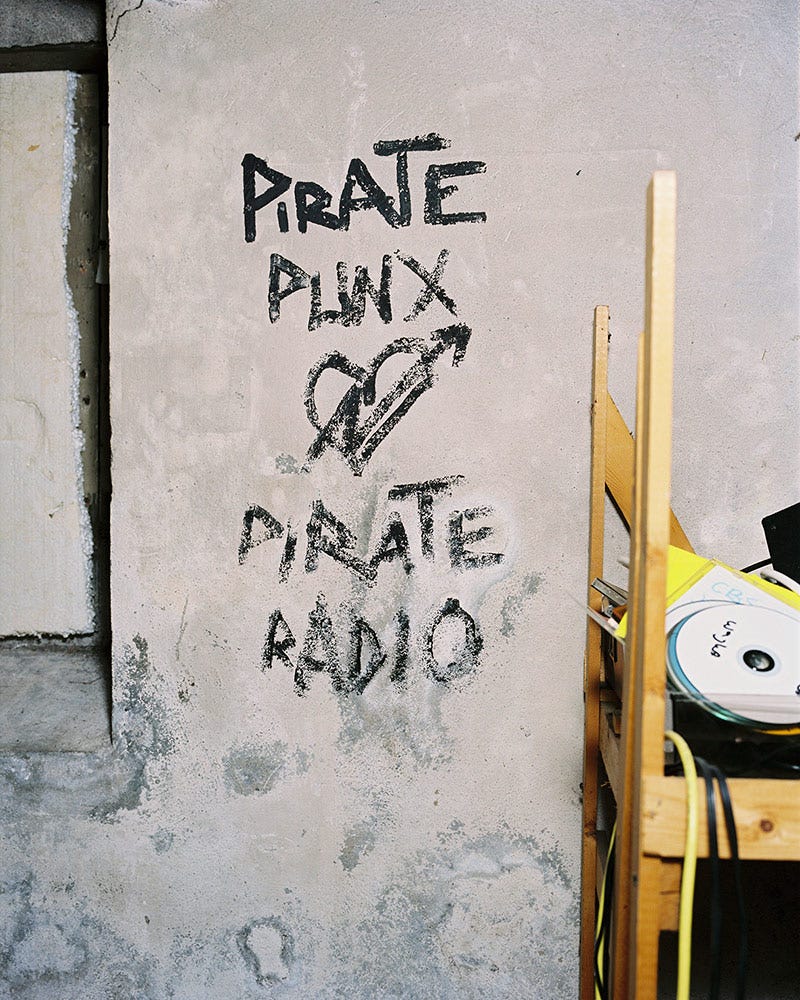
In the 1990s, Radio Tonka in The Hague in the Netherlands was, worldwide, one of the most prominent pirate radio stations. Housed in a squat, it was the literal temporary autonomous zone that open-minded broadcast buccaneers aspired to in the pre-internet, post-FM radio era.
Back in 1997, the pirate radio station I founded in New York City, called free103point9, was producing “The Microbroadcasting Hour,” interviewing various scofflaw transmitters about their craft. This interview, from Dec. 23, 1997, includes myself (DJ Dizzy at the time), Mr. E (also from free103point9), and Dr. Bob, who passed through Radio Tonko, and also some American radio stations. At the time, Radio Tonka was in a squatted villa in Zorgvliet in the Netherlands. “The building had been empty for twenty years before we squatted it,” according to founder Peter Bos in this Den Haag Centraal feature story. “The owner lived in Monaco, there was a for sale sign on the roof for twenty years. But the people who put a note in the mailbox out of interest got no answer. That's when we decided to squat it.” The station was in a number of squats over the years until a final eviction in 2003 was reported live on the air. After that, the station became a legal channel under Den Haag FM, then called Stadsomroep Den Haag. Radio Tonka is taking part in this weekend’s On Air - On Site festival (see below).
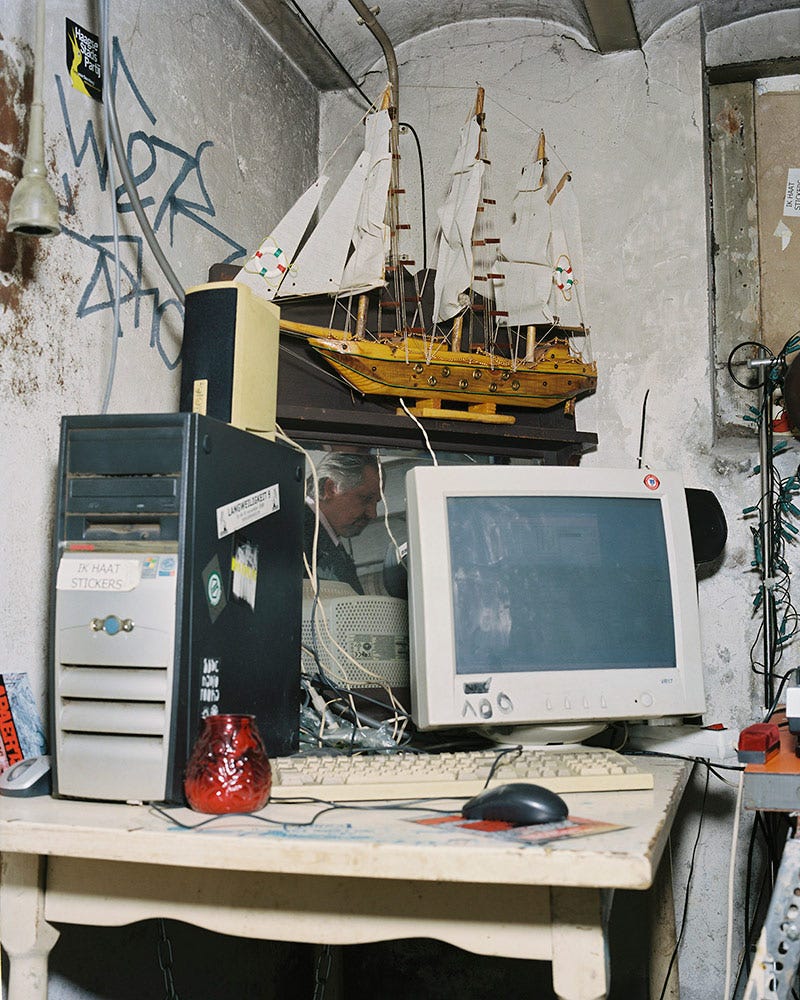
This interview took place at the free103point9 Project Space at 97 S. 6th St. between Bedford and Berry Aves. in Brooklyn. It is a real relic of its era, a pirate radio broadcast in Brooklyn about other pirate radio broadcasts around the world in 1997. Tune in here to listen to the audio.
LONNIE KOBRES
Here is an interview with one of the few pirate radio operators successfully prosecuted for taking over a sliver of the nation’s airwaves, Lonnie Kobres.
The context: in October 1997, many low-power pirate radio operators across the country were sharing tactical information and pressuring the Federal Communications Commission to open up the nation’s airwaves. The FCC, at this point in history, did not allow anyone to run a low-powered station, 100 watts or less, when many small stations could be on the air, broadcasting to and with their community. The pirates of the time, thousands of them, were proving their point through civil disobedience, providing community content from previously empty nooks and crannies on the FM dial.
In October, The Wall Street Journal ran a profile, complete with the tiny line-sketch, of Doug Brewer, who ran a pirate radio station called The Party Pirate, and also built and sold small transmitters to pirate stations across the country. The article, on the newspaper’s front page, was a stick in the FCC’s eye. Ralph Barlow, who heads the FCC office in Tampa, was quoted as saying about Brewer in the article, “Sooner or later, I'll nail him.” A month later, at 6 a.m. FCC agents were busting down the doors of Lutz Community Radio, The Party Pirate, and 87X (the station I helped found two years before).
In this interview, shortly after the raid, Kobres describes what happened that morning, before they dismantled his large radio tower:
“I could see the battering ram was starting to move towards the door, and so I opened it to keep our house, keep our property from being destroyed. And when I opened the door, they grabbed me and put me in a foreign-made car, a non-police car, and eventually I was hauled off to jail. And I was not allowed out of jail until I promised that I would not go on the air anymore.”— Loni Kobres, Lutz Community Radio, describing the FCC raid of his station on Nov. 19, 1997.
A succession of headlines and stories appeared locally and nationally about the pirate radio raids, and Kobres and his court sentence.
.
In this interview, Kobres describes his patriot programming and what patriotic music is, and questions the FCC.
Before he was sentenced, his neighbors testified on his behalf. Tom and Terry Cone wrote to Adams that Kobres and his wife, Cheryl, "have been good neighbors of ours for over 19 years…. We do not agree with Lonnie's political views, but believe him to be sincerely committed to the restoration of civic and spiritual values which formed the bedrock of our country when it was founded," the Cones wrote. Doug Flowerree, standing with his wife, Barbara, before U.S. District Judge Henry Lee Adams, said, "We see him as no harm to the community and see him as an asset to the community," said "Any kind of incarceration, any kind of heavy penalty, would be contrary to the benefit of the community." Click here to listen to the audio of the Lonnie Kobres intereview.
VICTORIA KEDDIE
Victoria Keddie’s latest transmission is called “Drift Choir” and “is a transmission-based system connecting Athens, New York, Berlin, and Bogotá in a month-long exchange of sound and image, running from May 1–30, 2025. It forms a closed-circuit network where listening, response, and acoustic presence constitute the core of participation. Rather than privileging clarity, efficiency, or reach, Drift Choir explores presence and human connection through a polyphonic play of space—where signal and noise, voice and place, dissolve into one another.”
KBLT
The documentary “40 Watts From Nowhere” about '90s Los Angeles pirate radio station KBLT (formerly SF pirate radio station KPBJ) makes its San Francisco premiere at the Roxie Theater on Saturday May 31 with a Q&A after the film with station founder Sue Carpenter, Stephen Dunifer of Free Radio Berkeley, and broadcast lawyer and ex-Cat Head Alan Korn discussing the film and the '90s microradio/pirate radio movement.
DAVID GOREN AND DAVE CINTRON
This June 13 Brooklyn Library talk “Pirate Radio in New York City 1939-1998: From Booger Brothers Broadcasting to WBAD-Bad Radio” is sure to be fascinating. Talking are David Goren, a radio documentary maker, audio archivist and pirate radio historian based in Brooklyn, and Dave Cintron, aka DJ Cintronics, who ran the large pirate WBAD in New York City in the 1990s. 6:30 p.m. 6:30 p.m. in the Library for Arts & Culture, with no webstream?
KA BAIRD




Ka Baird is one of my favorite sound artists, always pushing boundaries, and often pushing up against the transmission art line. Here she get the closest yet, with Baird writing about this May 22-24 at Edge Space in New York City, “I present new piece “a thousand miles of hungry static”… the spectral forces of reality are explored through an interplay of sonic exploration, physical movement, and colored light. defining the dimension both as what remains perpetually mysterious and defies understanding, as well as a sense of being ‘haunted’ by what no longer exists / unrealized futures, the piece seeks to defy pacifying forces through arresting noise. I will be sharing the evening with Kat Mustatea who will also be presenting a new 30-minute work titled ‘BodyMouth’ using a unique sensor-based instrument for embodied speech. This performance intertwines bodies and vocals as dancers sound out words phoneme-by-phoneme by enacting specific gestures in sequence, turning the body quite literally into a mouth.”
ON AIR ON SITE
On Air - On Site “is a sound investigation of a temporary radio event,” not necessarily radio art, though. There are live performances, fixed media, and a few radio artworks composed for the festival from May 23 to May 25 from The Hague. The project is organised in partnership with, and with a live webstream from
OPEN-WEATHER
On Substack, the transmission art Open-Weather collective made an announcement last week.
Year of Weather and NOAA satellites’ end-of-life
Call to action in the wake of dramatic cuts to NOAA services and the decommissioning of NOAA-15, NOAA-18 and NOAA-19
RADIO STATIC
JEFF GBUREK
Poland-based radio artist Jeff Gburek writes, “After hearing reports of the recent CME (May 14) plasma storm potential with proton additives in the mix and that HAM radio operator were saying ‘the bands are dead,’ I found a open spot to record VLF, Long Wave and Shortwave effects. All raw sound from the field without edits.”
RADIO FREE EUROPE
A few weeks ago R.E.M. released a five-track benefit EP with two remixes of their first single, “Radio Free Europe,” to protest the current American regime’s plan to eliminate the foreign broadcasting service. The 2025 remix by the band's longtime collaborator Jacknife Lee is getting the attention, but the fascinating and breathtaking track on the EP comes from original R.E.M. producer (and Let’s Active leader) Mitch Easter’s 1981 “Radio Free Dub.” It is almost four minutes of sheer joy for anyone who has heard the most impactful early indie rock single thousands of times. If you are new to the song, I’m sure you will enjoy Easter’s psychedelic knob-twiddling. R.E.M. writes, “Radio Free Europe/Radio Liberty was established by the United States 75 years ago and currently broadcasts news and information in 27 languages to 23 countries where a free press is either banned by the government or under threat. Throughout the Cold War and continuing today, RFE/RL is often the only lifeline to the outside world for people living under extreme censorship. Members of R.E.M. say this mission of promoting free expression has always resonated with the band: ‘Whether it’s music or a free press – censorship anywhere is a threat to the truth everywhere. On World Press Freedom Day, I’m sending a shout-out to the brave journalists at Radio Free Europe,’ says Michael Stipe, lead singer and founding member of R.E.M.”
WAVE FARM
I founded both the non-profit transmission arts organization Wave Farm (that derived from free103point9, the pirate radio station I founded with Violet Hopkins and Greg Anderson), and the community radio station WGXC. After I founded the organization, I made my wife executive director. Last year, she divorced me, and fired me from the job I founded.
Well, she had the Wave Farm board fire me, a spineless bunch she has hand-picked to do her bidding, and controls. Whatever. I have literally moved on.
The only reason I mention this, or care at all, is both my ex-wife and Wave Farm still have many of my belongings. Records, transmitters, flyers, videotape archives, tapes, weird instruments, historical pirate radio materials, and many personal items one collects over 25 years. There is a chest full of my old newspaper clippings, for instance. But for some reason, the Wave Farm board has not contacted me since December, when a board member wrote that they would get back to me in a few days. They never did. My ex-wife floated a few dates that I could come over and pick up my things, per the legal agreement she signed, but they were not dates I was available. Now she and the board refuse to contact me in any way, and they still have many of my belongings. It is very weird.
First, if you are a quarter-century old nonprofit about to fire your founder, it would seem like you would come up with a plan beforehand. They did not. They promised me severance pay, and then failed to come through on their promise. They promised to return my emails, the account they took from me as I was downloading it the week after they fired me. They still have not returned my emails. They still have not let me come to Wave Farm, and figure out what stuff is mine, have me take it away, and be done with it. Instead, they are dragging this out for a year now with no end in sight.
Meanwhile, WGXC has, since I have been gone:
Largely given up broadcasting transmission art.
Eliminated most of its local music coverage.
Continues to be an anti-union station that won’t let employees organize.
Stopped promoting local events, with a ghost town of a community calendar.
Ended local news coverage.
Reduced the times the “Better Weather” airs.
Removed local programming for syndicated news about other areas of New York.
Ended broadcasting live events regularly.
Stopped airing “Donald Drumpf Theatre.”
Seemingly scrubbed their website of all previous DEI references in hopes of getting an NEA grant. Ha, ha!
I hope eventually Wave Farm lets me get my belongings back. The idea is to open a pirate radio museum with the historic artifacts, once they allow me to retrieve them.
Send submissions, press releases, digital albums, etc. to this column at tomroeradio@proton.me. Please don’t hesitate to promote your radio art.
Radio news this week:
Respond
Send items, press releases, announcements, letters to the editor, angry responses, gentle praise, images, sound, and more for this column to:
tomroeradio@proton.me
Everyone is also encouraged to make comments on this site. Interact! Please get in touch if you feel something is incorrect. If you like this column, please subscribe. It is free, or you can consider being the start of a new local media foundation, with your voluntary contribution. Please consider getting this new multi-media project started with a lifetime subscription. Thank you — Tom Roe.





